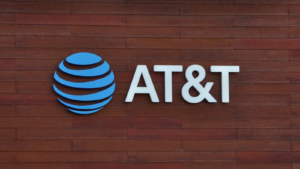Blue-chip stocks offer investors the opportunity to generate stable returns. Most of these stocks are household names that can weather economic uncertainty better than high-growth stocks.
However, some stocks hold the designation of “blue-chip” for a bit too long. Just because a company is well-known doesn’t guarantee its stock will go up over the years. Some companies that were reliable picks years ago ended up hurting long-term investors.
Some blue-chip stocks are better than others, but these three companies look like duds at risk of receiving downgrades.
Disney (DIS)

It’s not a stretch to say that the company is in an existential crisis. The company is losing big on streaming and has lower growth rates for its platforms.
The company rewarded investors in the 2010s as its acquisitions paid off. However, Disney (NYSE:DIS) has destroyed much of the goodwill from franchises like Lucasfilm and Marvel. Consumers are fatigued with these brands, and Disney CEO Bob Iger even admitted to this in August.
Disney has released a string of flops in recent years. The Marvels is widely expected to be another flop. Investors have taken notice, and Disney shares trade at the same levels as they did in 2014.
Disney has been relying on nostalgia for years. The corporation has focused on more acquiring popular brands than innovating in the space. As fewer people care about where these iconic franchises go next, Disney stock faces an uphill battle.
Theme parks are a major revenue driver for the company, but higher prices can keep more people out of the parks. Disney barely posted year-over-year revenue growth in the most recent quarter, and economic pressure can result in declining revenue growth in the future.
The comments from this article highlight how much it costs to go to a Disney Theme Park. One commenter mentioned that a week at Disney is just as expensive as a month in Poland. Another commenter visited London, Paris, Rome and Athens for two weeks. It cost this commenter just as much for a one-week trip to Disney World.
The value proposition isn’t there at the current price points. The continued streak of flops and macroeconomic conditions can lead to more losses and a stock downgrade.
Target (TGT)

It’s no secret that Target (NYSE:TGT) is in trouble. The company makes most of its revenue from discretionary spending which will go down as student loans and high inflation continue to weaken consumers.
Target shares have declined by 25% year-to-date. Revenue dropped by 4.9% year-over-year in the second quarter, and ominous comments from Target’s CEO suggest worsening conditions.
CEO Brian Cornell went on CNBC and mentioned that consumers are pulling back on groceries. That’s one of the last expenses people will cut. Many consumers will cut their other expenses first before reducing their grocery bills.
However, this cut is happening, and it’s easy to imply that consumers have made larger cuts to their discretionary spending. While this can be exclusive to Target, this problem is likely across the board.
This development doesn’t suggest a good reception when Target reports earnings on November 15. Target’s dividend yield is close to 4%, but that doesn’t necessarily make it a buy. Target briefly fell below $103/share in October. It seems likely that shares will head back in that direction.
AT&T (T)

AT&T (NYSE:T) has been a poor-performing stock that only attracts investors for its high dividend yield. Shares are trading at the same level as they did in 1993. Shares currently have a 7% dividend yield, but it’s not likely to last for long.
AT&T had to cut its dividend in 2022, and another dividend cut seems to be around the corner. Revenue only crept up by 1% year-over-year and net income dropped by 42% year-over-year.
AT&T has more than $51.7 billion in current liabilities compared to $35.6 billion in current assets. That large gap means AT&T will have to continue refinancing its debt and get stuck with higher interest rates. It’s not a good look for a company that cut its dividend in 2022 and has punished long-term investors with significant losses.
AT&T stock is down by 31% throughout the past five years. The stock’s 15% year-to-date decline doesn’t suggest a recovery is on the way.
On the date of publication, Marc Guberti did not have (either directly or indirectly) any positions in the securities mentioned in this article. The opinions expressed in this article are those of the writer, subject to the InvestorPlace.com Publishing Guidelines.
